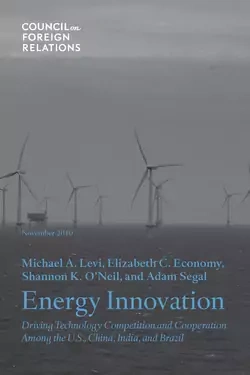
Energy Innovation
Driving Technology Competition and Cooperation Among the United States, China, India, and Brazil

- Report
Overview
Low-carbon technology innovation and diffusion are both essential aspects of an effective response to climate change. Studying China, India, and Brazil, Michael A. Levi, Elizabeth C. Economy, Shannon K. O’Neil, and Adam Segal examine how innovation in low-carbon technologies occurs and how the resulting developments are diffused and adopted. This report zeros in on a critical tension: the United States' interests in encouraging the spread of technology to reduce emissions can clash with efforts to strengthen its own economy. This tension has traditionally been the province of debates over “technology transfer” and intellectual property rights; this study goes beyond those debates to look at the complete innovation system.
The authors begin by exploring each major emerging economy in four different dimensions. First, they examine how efforts to create and manufacture low-carbon technologies do and do not stimulate efforts to deploy those technologies at home. Second, they assess how government policies affect countries' abilities to absorb technologies, looking at policies that create markets, invest in innovation, protect intellectual property rights (IPR), and affect trade and investment barriers. Third, they examine how the economic structure of each major emerging economy affects the country’s ability to respond to climate change through innovation and foreign technology absorption. Fourth, they examine each country's ambitions for technology and product exports, which affect the degree to which U.S. commercial interests are helped or hindered by the spread of technology.
More on:
The report then assesses a range of policies and offers recommendations. These are aimed at boosting domestic investment in innovation, strengthening active government promotion of technology transfer and diffusion, and promoting an open international system conducive to the commercial spread of technology. Recommendations address IPR, trade and investment rules, government support for research, development and demonstration, standard setting, technology cooperation centers, and multilateral institutions, among other areas.
The study also includes detailed case studies of wind technology in all three countries, clean coal in China and India, electric vehicles in China, solar energy in India, and biofuels and deforestation in Brazil.
More on:
 Online Store
Online Store